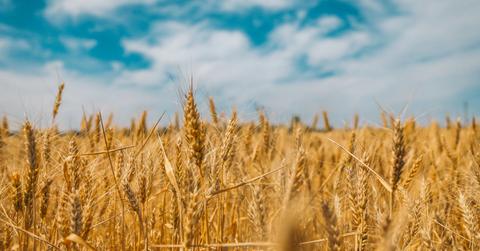A Trader’s Guide to the Commodities Market
Learn the basics of commodities trading, including the most traded commodities worldwide, and what it takes to be a successful trader in this class.
Dec. 11 2019, Updated 12:29 p.m. ET

The commodity market is a great platform for speculating on a diverse and exciting range of global assets. In this guide to commodity trading basics, brought to you by DailyFX, you’ll learn about the traded commodities worldwide and the key things to consider when approaching this class.
What is commodity trading, and how does it work?
Commodity trading means taking a position on the price movement of a raw material (hard commodity) or agricultural product (soft commodity), such as gold or wheat. You can invest in commodities directly—for example, buying physical gold coins. Or you can, depending on the territory, trade using options, futures, ETFs (DBC)(PDBC)(CSG), and CFDs or spread betting.
What are the most traded commodities worldwide?
We can break down the most-traded types of commodities into the metals gold, silver, copper, and steel, energy commodities such as Brent crude and WTI crude, and soft commodities such as soya beans, according to data from the Futures Industry Association.
Assets such as copper are popular during economic booms. High demand in emerging markets often pushes up prices. However, assets like gold are often more popular in general bear markets as gold is considered a more defensive play. Here are some more examples of tradeable commodities.
| Hard Commodities | Soft Commodities |
| Platinum | Coffee |
| Natural gas | Sugar |
| Lead | Corn |
| Iron | Orange juice |
| Nickel | Wheat |
Five things to consider when trading commodities
When trading commodities, it’s important to consider the full range of factors that move the prices. You also need to ensure you manage your trading risk effectively. Here are some pointers.
-
Supply and demand factors
Supply and demand are critical to understanding the price movements of commodities. In general, when supply is too low to meet demand, prices will rise. And supply outstripping demand will mean prices will fall. Seasonality can affect supply for agricultural products, and changing costs of production can affect output for all commodities.
Additionally, supply levels can fluctuate as new producers enter and exit the market—as well as demand for certain resources changing according to global consumption patterns (see below).
-
Other fundamental factors
Fundamental factors can hit commodity prices hard. For example, if the global economy is struggling, there may be less demand for industrial commodities such as copper. However, in times of hardship, a safe-haven commodity such as gold may increase in value. Politics can also influence prices. An example would be a government increasing import duties, which may push up the price of a commodity.
-
Volatility and liquidity
Some commodities—such as crude oil—may be liquid, meaning there are enough buyers and sellers in the market to enter and exit positions at the price they want. However, other lesser-traded assets—such as feeder cattle—don’t have this characteristic. So they may experience “slippage”—when there’s a change in the bid/ask price. Also, commodities such as crude oil are highly volatile. They can represent an opportunity to make significant profits. But naturally, this benefit means the risk of loss is higher, too.
-
Trading style
Like any asset, commodities can trade on a short-term basis, meaning scalping and day trading, or more medium- and long-term, meaning swing and position trading. Many traders use a mixture of technical and fundamental analysis to navigate these markets.
-
Trading risk
When approaching commodities, like any asset, traders should use a positive risk-reward ratio. They should also set stop losses to protect their trading account against volatility.
For more data on international commodities, the Global Commodities tool from DailyFX is an interactive globe revealing country-by-country statistics on the key assets integral to world trade.
How to trade commodities: Gold example
Here, we’ll look at a simple example for trading gold. Before you start, though, consider the fundamentals. Seasonality plays a part with this asset. Patterns from previous years show a price increase in the first quarter of the year, as well as the last months of the year. Also, as we mentioned, fundamental factors such as economic downturns can influence the flow of money into gold.
Now you have taken those factors into account, you can take a technical approach. Commonly, this approach will involve using indicators such as RSI and stochastics to determine when the asset is overbought (time to sell) or oversold (time to buy). The chart below reveals the type of signals to look for when considering opening a position.
Three advantages of trading the commodities market
-
Profits
Trading means making money, and the volatility of many commodities means ample opportunities for profit.
-
Safe haven
Trading gold, in particular, can afford traders the opportunity to protect their portfolios in times of turbulence during risk-on markets.
-
Diversified approach
Since commodities mostly show low correlation with equities, it may be worth including them for a more diversified approach.
